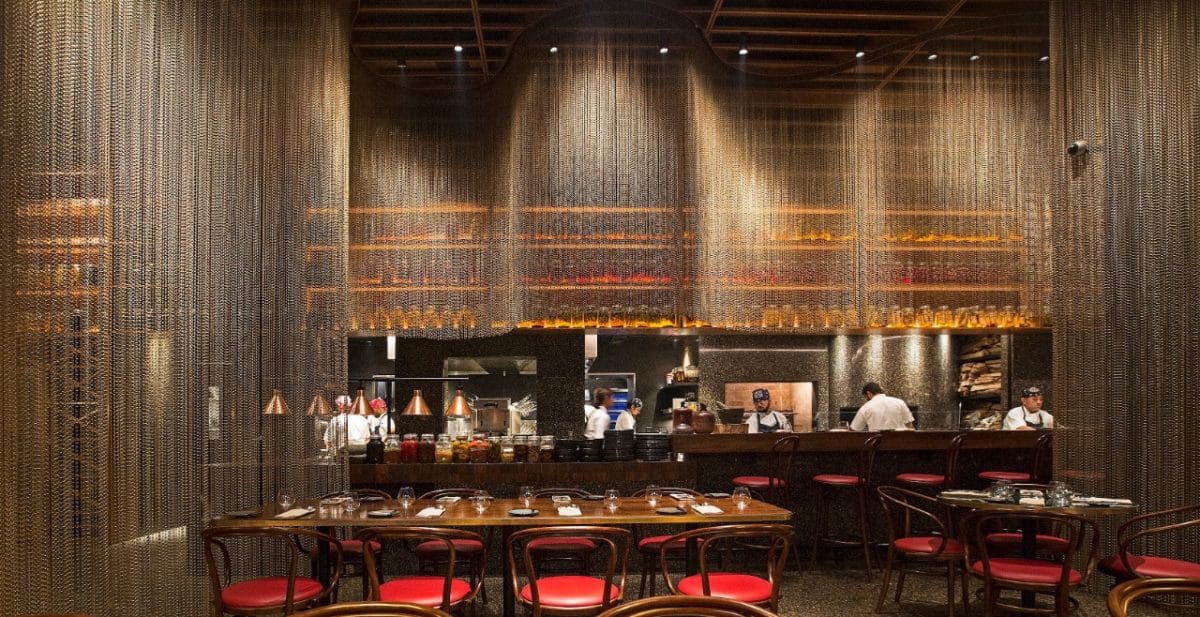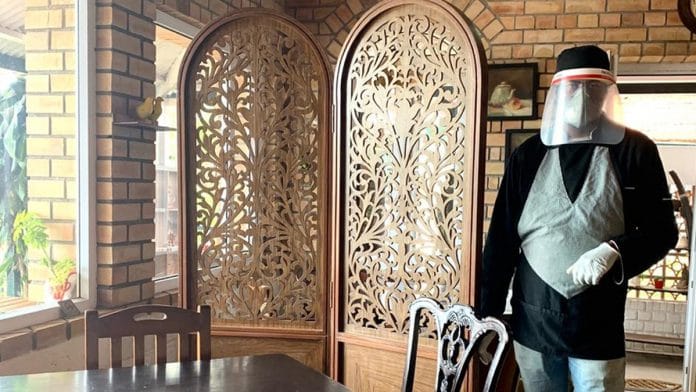Spatial seating, mask-clad waiters, temperature checks at the entrance and perhaps bottles of hand sanitiser replacing salt and pepper shakers are likely to greet diners at most restaurants as India eases lockdown restrictions and dining establishments are set to open in phases from 8 June.
Despite the green light from the Ministry of Home Affairs, the mood in India is grim. After all, India’s organised restaurant industry is expected to see a 40-50 per cent fall in revenues in FY21 and implementing even the bare minimum of sanitation measures is an added cost, one that will be even more difficult to take on given the limited number of diners allowed at a time now.
And, going beyond basic hygiene and cute masks that will only go so far, some restaurateurs are asking bigger questions: Whether it’s greenhouses or plexiglass structures over diners’ heads, how do we retrofit according to precautions against Covid, but in a way that we don’t end up looking like every other restaurant?
Also read: From remote shoots to topical plots, how advertising races to stay relevant in the pandemic
The seating challenge
The first challenge most eateries face is separating tables and ensuring six feet of distance between dining spots. Expanding into streets and opting for outdoor seating as seen in some US states and European countries seems like a practical choice. But for restaurants in Indians cities with extreme climates, like Chennai or Mumbai, that may not be viable.
In Bengaluru, 77-year-old Vidyarthi Bhavan is experimenting with plexiglass partitions between seats to enable social distancing while Kappa Chakka Kandhari in Chennai has planned alternate tables, to be disinfected after every dining session before the next set of guests arrive.
Though plexiglass partitions are easily sanitised at regular intervals without suffering much wear and tear, restaurateurs are hesitant to use them over fears that it could make their spaces appear clinical, like a hospital. Café Diem in Coonoor, has, instead, opted for intricate wooden screens in between tables.
“Remodelling will have to involve tweaking the ambience. There’s no escaping that,” owner Radhika Shastry tells ThePrint. However, with digital menus and e-payments becoming more of a norm, she notes that the cafe’s traditional handcrafted menu cards will be out the window. “My staff will also be in visors and masks, and though that is not ideal for an experiential café in a hillstation, I won’t be compromising on their safety anytime soon,” she adds.
Also read: The Pind Collective, an India-Pakistan art project that’s now focusing on responses to Covid
Designing for trust
Eateries are also re-evaluating the need for buffets and seating booths as they involve constant touching of surfaces. Some are considering whether to only include furniture made of materials like marble that won’t wear and tear from repeated sanitisation.
When asked whether conveyor belts to minimise waiter-to-customer contact is a good idea, Mumbai-based chef and restaurateur, Rahul Akerkar argues that while less clutter can promote a good hygiene perception of a restaurant, “Conveyor belts are worse than collapsible plane trays. Food spills all over them so they’re not hygienic at all”. Indeed, several sushi chains in Japan, such as Kappa Create Co. and Hamazushi Co., have swapped conveyor belts for touch panels that guests can use to order.
But whatever the material or format, the point is to build trust with diners, even if it means a centrally accessible hand-washing station. To that end, Akerkar says a more effective idea would be to have an open kitchen or one in the middle of the restaurant so that guests can watch how their food is being cooked. Akerkar feels his restaurant Qualia in Lower Parel, Mumbai, may be lucky this way as it has an open kitchen that runs along the 100-foot length of the restaurant.

Designated exchange zones within the restaurant’s kitchen could also be a way to communicate transparency. US architecture firm Mass Design Group has conceptualised a kitchen in which there are designated zones or “buffer spaces” for chefs, servers, delivery and unpacking staff that, by restricting movement, help a restaurant seem Covid-prepared.
Also read: Live shows out, live-streaming in: What the future of performing arts could look like
The air ventilation hurdle
In late April, a chilling diagram showing how nine people in a Chinese restaurant caught Covid-19 due to the placement of an air-conditioning unit went viral. It’s safe to say that restaurants that cannot afford outdoor seating will have to seriously rethink air-conditioning.
Zameer Basrai, co-founder of The Busride Design Studio, which has designed Mumbai’s popular The Bombay Canteen among others, tells ThePrint ACs do not have to be scrapped entirely but if used, will need to run at a higher efficiency to ensure regular air changes (per hour).
70-year-old veteran architect Shahrukh Mistry suggests more greenery and miniaturised plants can help improve air quality. He explains that even non-expensive plants like mother-in-law’s tongue and palm placed in between tables can keep a space well oxygenated while also giving guests both privacy and distancing.
He argues that Covid-19 is an example of humankind’s unsustainable ways, which means remodelling spaces and lifestyles sustainably is the only way forward.
Also read: ArtChainIndia, a peer-support movement helping artists tide over the Covid crisis






